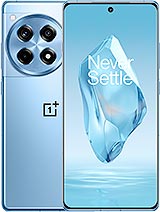Lava Shark 5G alternatives
Tap above to see alternatives.
Oppo K13 Turbo Pro alternatives
Tap above to see alternatives.
Lava Shark 5G

Lava Shark 5G
-
Unisoc T765
6 nm
-
5000 mAh
18W
-
6.75"
720 x 1612 pixels
-
13 MP
1080p@30fps
-
Specs

Oppo K13 Turbo Pro

Oppo K13 Turbo Pro
-
Snapdragon 8s Gen 4
4 nm
-
7000 mAh
80W
-
6.8"
1280 x 2800 pixels
-
50 MP
4K@30/60fps
- Specs
2.3 GHz, Dual core, Cortex A76
2.1 GHz, Hexa Core, Cortex A55
1x3.21 GHz Cortex-X4
3x3.0 GHz Cortex-A720
2x2.8 GHz Cortex-A720
2x2.0 GHz Cortex-A720
12GB 256GB (UFS 4.0)
(wide), AF
f/1.8, 27mm (wide), 1/2.88", OmniVision OV50D40, PDAF, OIS
2 MP
f/2.4, 1/5.0", 1.75µm
1080p@30fps
f/2.45, 23mm (wide), 1/3.09", 1µm, Sony IMX480
SIM1: Nano, SIM2: Nano
SIM1: Nano, SIM2: Nano
7 5G bands
n1, n5, n8, n28, n40, n77, n78
16 5G bands
n1, n3, n5, n8, n28, n38, n40, n41, n48, n66, n77, n78, n80, n81, n84, n89
In this performance comparison, the Oppo K13 Turbo Pro with its Qualcomm Snapdragon 8s Gen 4 (4nm) performs better than the Lava Shark 5G with the Unisoc Unisoc T765 (6nm), thanks to superior chipset efficiency.
Oppo K13 Turbo Pro launched with Android 15 and will receive updates, while Lava Shark 5G has no confirmed OS update information. Oppo K13 Turbo Pro receives 3 years of security updates, while Lava Shark 5G does not have confirmed info.
Oppo K13 Turbo Pro features a superior AMOLED display, while Lava Shark 5G comes with an LCD panel. In terms of smoothness, Oppo K13 Turbo Pro offers a higher 120 Hz refresh rate, ensuring fluid scrolling and animations. Both devices deliver the same brightness level at nits. Notably, Oppo K13 Turbo Pro offers a higher screen resolution, resulting in sharper visuals and more detailed content.
Oppo K13 Turbo Pro features a larger 7000 mAh battery, potentially delivering better battery life. Oppo K13 Turbo Pro also supports faster wired charging at 80W, compared to 18W on Lava Shark 5G.
Oppo K13 Turbo Pro offers better protection against water and dust with an IP69 rating.
¹ Scores can vary even with the same chipset due to RAM, thermals, and software optimization.










